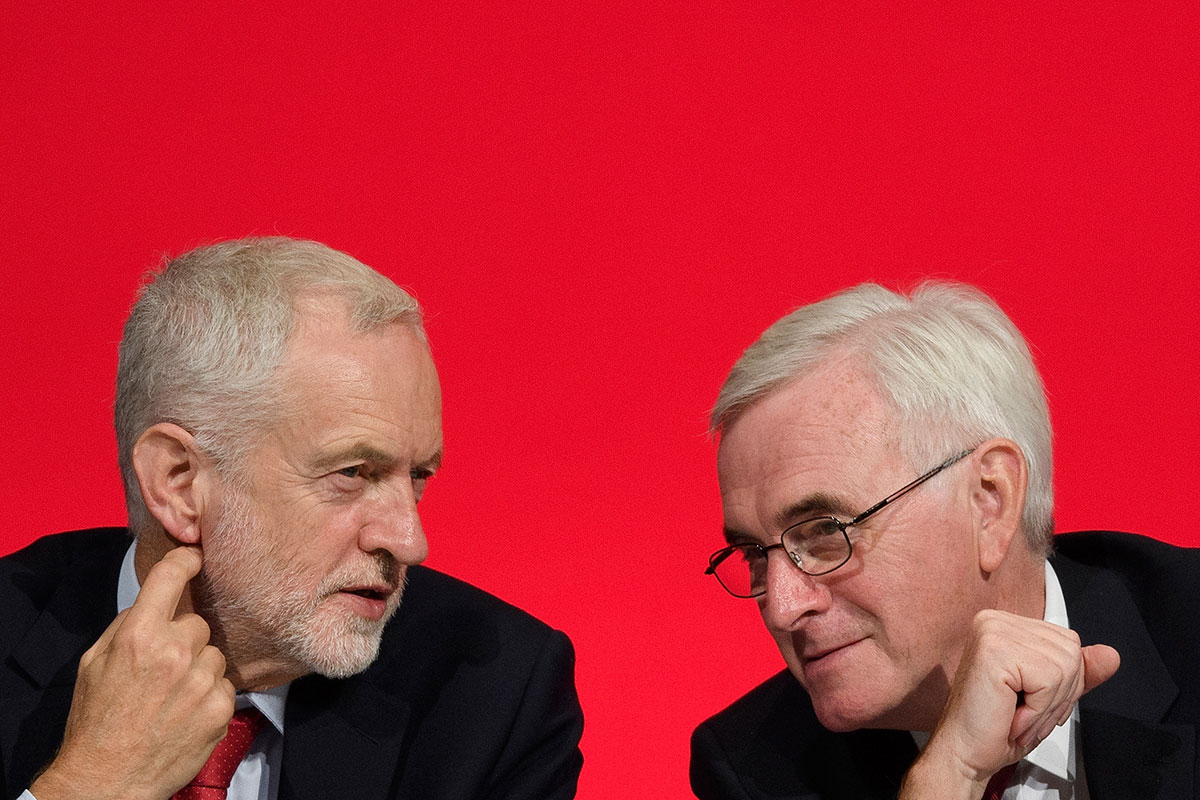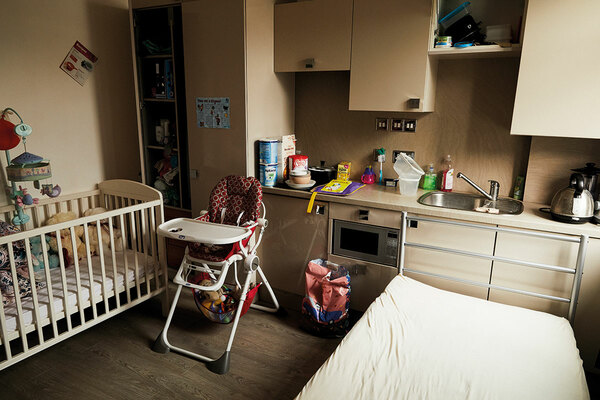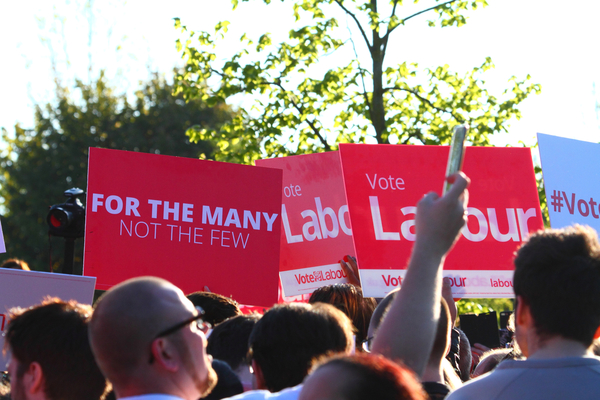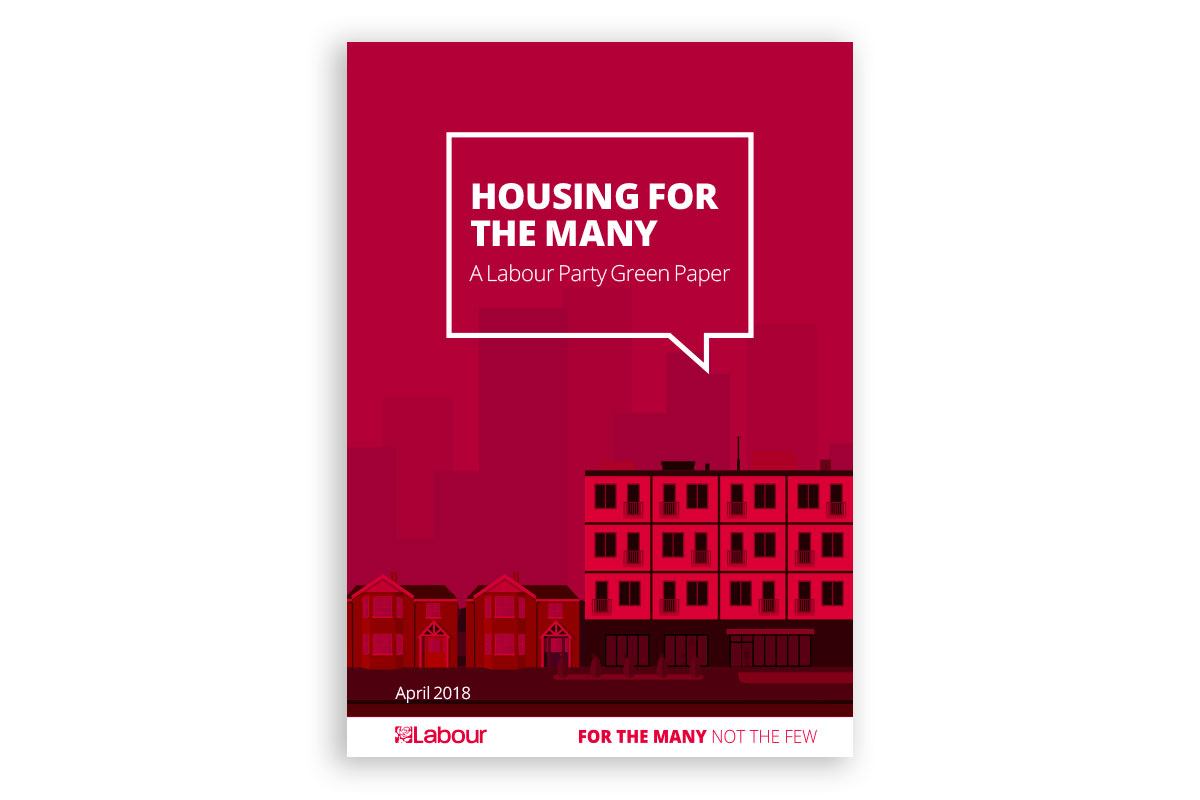You are viewing 1 of your 1 free articles
Can Labour get to grips with the housing crisis?
Labour has committed to a transformational affordable housebuilding programme – but can it deliver on its ambitious targets? With political uncertainty still hanging over Westminster, Chaminda Jayanetti takes a look beneath the bonnet. Picture by Getty
When it comes to housing, Labour has some bold ambitions.
The party has committed to building a million “genuinely affordable” new homes in England over 10 years, most for social rent.
After five years, it says it will be building more than 100,000 affordable homes annually. Overall, its most recent commitment was to build 250,000 new homes of all tenures each year for five years.
But Labour’s radical proposals go beyond just volume.
It wants to ditch the current definition of ‘affordable rent’, which is set at up to 80% of market rents. Instead, there would be three categories of affordable housing: traditional social rents; new ‘living rent’ homes pegged at up to a third of average local household incomes; and low-cost homes for sale, including new FirstBuy homes priced so that mortgage payments are no more than a third of average local household incomes.
“Labour’s plans will need significant public investment, although it argues that in the long run, they will reverse Margaret Thatcher’s approach of letting housing benefit ‘take the strain’”
Labour has set a longer-term aim of more than half of new homes being affordable. If it can pull this off, it will be the biggest transformation of Britain’s housing market in at least 40 years. But does its housing strategy truly address the crisis gripping the country?
Labour’s plans will need significant public investment, although it argues that in the long run, they will reverse Margaret Thatcher’s approach of letting housing benefit “take the strain”, in the words of her former housing minister Sir George Young.
Shadow chancellor John McDonnell has pledged to run balanced budgets on day-to-day spending, but Labour sources say he is ready to borrow for infrastructure, including housebuilding.
Labour’s Housing Green Paper, Housing for the Many, published in April last year, sets out a variety of funding initiatives for councils and housing associations.
Key among them is the restoration of the national housing grant to an initial £4bn a year – eight times its 2016/17 size – rising further as the sector’s housebuilding capacity grows.
Labour will also consider financing housebuilding from its proposed state investment bank. The bank’s role is potentially vital, because of its sheer financial firepower, with a proposed £500bn pot to invest across all areas of government over 10 years.
“Having a central investment bank is a new idea that could be a game changer,” Andrew Whitaker, planning director at the Home Builders Federation, tells Inside Housing. “We’ll be quite interested in working with a new Labour government… on how they bring that about and how they use that money to provide more affordable housing.”
Housing for the Many is thin on specific figures when it comes to funding. This is perhaps unsurprising, given the unpredictability of land and labour costs over a decade and the fact that capital spend falls outside the party’s commitment to balanced budgets.
“Having a central investment bank could be a game changer” – Andrew Whitaker, planning director, Home Builders Federation
Plans to enable the purchase of land at close to its existing use value could help the money go further. The party intends to create an English Sovereign Land Trust with compulsory purchase powers to help councils buy land more cheaply. But the magnitude of the potential savings varies from region to region – and is disputed.
“[W]hat Labour are saying is, ‘Ah, there’s loads more uplift in land value that we can capture and pay for affordable housing,’” says Mr Whitaker. “But we don’t think there’s very much at all.”
A recent parliamentary report estimates that around half the rise in land values stemming from residential planning permission went to landowners, much of which was then spent on the infrastructure, services and affordable housing that accompany housing developments.
The report concludes that there is “scope for central and local government to claim a greater proportion of land value increases”. The true extent of those gains is yet to emerge, but Labour is confident it can use them to fund better homes.
By hosing billions of pounds at councils and housing associations, Labour wants to reduce government’s dependence on Section 106 to provide affordable housing and thereby cut its reliance on private developers.
However, plans to introduce a presumption that all developments, including smaller sites, must include affordable housing are controversial.
Sarah McMonagle, director of external affairs at the Federation of Master Builders, tells Inside Housing that such a requirement could be counterproductive. “It really isn’t feasible. If you’re starting to think about building six houses and two of them are affordable, it just means that no houses are going to be built and everything is less affordable.”
In numbers: Labour’s housing proposals
£4bn: the size of annual housing grant a Labour government would make available initially
£500bn: the amount of finance Labour believes its proposed state investment would deliver across all areas of government
One million: the number of “genuinely affordable” new homes in England that Labour has pledged to deliver over 10 years
Mr Whitaker agrees that the issue is “the hassle for the small developer of having to… do the deal with the housing association on two dwellings, when some of these smaller-scale developers, by definition, don’t do a lot of housing developments”.
Labour argues that the current small sites exemption, introduced in 2014, means that areas without large sites, especially rural towns and villages, could end up with no affordable housing. It believes it could assuage discomfort at removing the exemption through other measures to help SME house builders – loans, grants and cut-price land.
Under Labour, councils would have a duty to provide affordable homes based on an assessment of local needs. Housing for the Many doesn’t specify what would be used to determine these needs, but Inside Housing understands it would be a composite measure, potentially including house prices and local levels of non-decent housing and insecure tenancies.
The aim is that affordable housing assessments should reflect the different ways the housing crisis manifests in different parts of England. As Melanie Rees, head of policy at the Chartered Institute of Housing, says: “It’s really important that any policy… is flexible enough to recognise that
different parts of the country need different solutions.”
All this amounts to a heavily beefed-up affordable housing obligation. But it also leaves open the possibility of clashing local and national government agendas.
Click here to read Labour’s Housing for the Many report
Anthony Breach, analyst at thinktank Centre for Cities, adds: “There are district councils in high-demand cities and their hinterlands that are sensitive to local pressure to limit new housing built in their area. This refusal to build is a political decision. While Labour’s aim to increase housing supply is the right thing to do, they, like the Conservatives, need a strategy to deliver the homes in the face of local opposition.”
Labour sources tell Inside Housing that the party thinks taking a hostile attitude to recalcitrant councils would be counterproductive. It also plans to win over nimbys by ensuring that housing developments include affordable housing and infrastructure development and giving local first-time buyers ‘first dibs’ on homes.
Arguably the biggest gamble in its housing strategy is Labour’s belief it can hit its target without infringing on the green belt. A string of English cities are hemmed in by green belt land, so Labour will need brownfield land for a large quantity of its housing.
Government figures suggest there are enough brownfield sites across England for at least a million homes – that will be swallowed up by just four years of Labour’s annual 250,000-home target. On the other hand, in 2017, the Greater London Authority said there was capacity in London to build 650,000 homes over 10 years without touching the green belt.
However, brownfield sites come with their own problems. “If it had been a petrol station or heavy industry, to make that appropriate to build homes on could significantly add to the cost,” explains Ms Rees.
Arguably the biggest gamble in its housing strategy is Labour’s belief it can hit its target without infringing on the green belt
Even if Labour overcomes these challenges, are a million affordable homes enough? Research by the National Housing Federation and Crisis published in May last year found that 340,000 new homes are needed each year until 2031 – including 90,000 for social rent.
Labour’s ambitions approach these levels but ramping up construction rates to those levels will take time. The most recent data shows 82,000 households in temporary accommodation, but social housing waiting lists stand at nearly 1.2 million.
Labour wants to be building 100,000 affordable homes a year by the end of its first term, so it will build well under half a million and possibly under a quarter of a million affordable homes in that time.
Meanwhile, millions of tenants would be stuck in private rented homes or languishing on council housing waiting lists. Labour’s proposals to lengthen private tenancies and cap rent rises may help, but won’t immediately cut housing costs.
What it has not addressed is the dramatic fall in the value of housing welfare payments since 2010 – Local Housing Allowance (LHA) is limited to the cheapest 30% of local rents – and the cut in real terms of benefits.
Labour’s approach to welfare has been cautious. The party has pledged to raise benefits in line with inflation, but housing benefit and LHA would need to rise much faster to compensate for a decade of cuts and make private rents more affordable.
Unless that happens, the housing crisis could persist while a Labour government slowly chips away at the shortfall.
At a glance: Labour’s social housing proposals
- Scrap the affordable rent product and introduce new income-linked rents
- Introduce a new “Decent Homes 2” target for social landlords to improve fire safety post-Grenfell
- Make housing associations subject to the Freedom of Information Act
- Prohibit for-profit housing associations
- Set a new target of one million new affordable homes over 10 years, mostly at social rent
- Impose a new duty to deliver affordable homes on councils, introducing a new needs assessment and an affordable new homes bonus
- Establish a new English Sovereign Land Trust to help councils acquire land more cheaply.
- Form a new national tenants’ organisation and commissioner
- A “longer-term aim” for half of all new homes to be “genuinely affordable”
- Give housing associations access to Public Works Loan Board finance
- Consider returning in full the Treasury’s previous year’s share of Right to Buy receipts
- Introduce a planning “presumption” that all developments, including rural and smaller sites, will include affordable housing
- Help councils with no stock to start a Housing Revenue Account
- Fast-track Karen Buck’s Homes (Fitness for Habitation) bill
- Consult on requiring landlords to publish an annual “outsourcing statement”
- Consult on housing associations to be required to have tenants on their boards
















